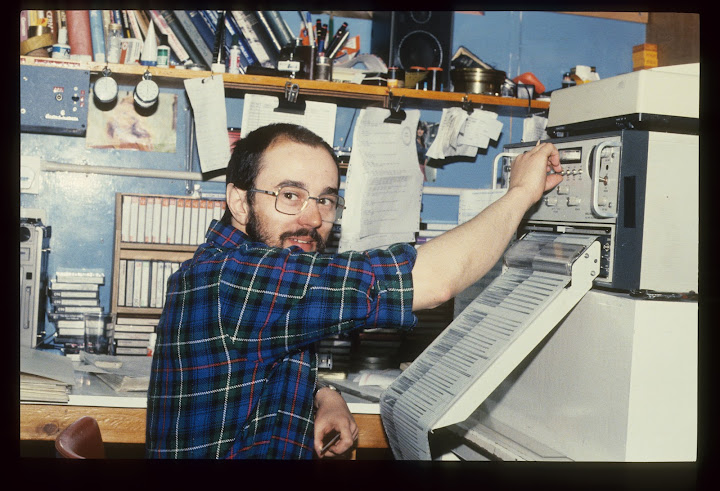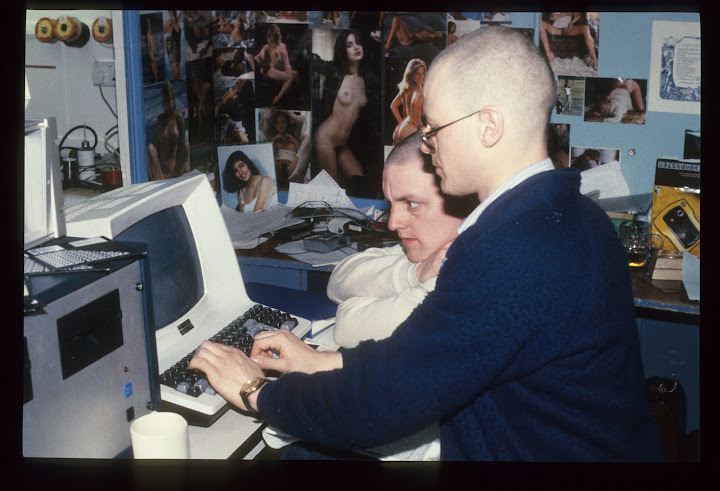|
 |
| . | Picture by Ian Jones |
|
Alex Torres operating the Beukers receiver during a radiosonde flight.
November 1983.
|
The weather balloons carried a radiosonde with sensors and a radio
transmitter. Data from the sensors was radioed back to us, picked up on
the Beukers receiver and displayed by a chart recorder, which is visible
in the picture. We would read the values off the chart and plot them on a
Vaisala diagram. From that we would compose the coded meteorological TEMP
message and broadcast it into the global forecasting system through our
data collection platform (DCP).
 |
| . | Picture by Ian Jones |
|
Pete Tarnas and Steve Lloyd with the BAS Micro, November 1983. The
microcomptuer is actually the big grey and blue box to the left of the
terminal.
|
The BAS microcomputer arrived in January 1983. At that time there were
commercially-made machines such as the Commodore, however BAS designed its
own machine based on the 6809 microprocessor. Its first purpose was to
read back and verify the tapes on which the magnetometers logged data, so
that we could quickly spot if the magnetometers or the tape loggers were
faulty. Of course the micro was used for other tasks too including word
processing - most of the 1983 base reports were written on it. Some base
members even wrote programs on it using BASIC or FORTH.
 |
| . | Picture by Ian Jones |
|
Construction of one of the intersections at Halley 4.
|
The main tubes of the base were built with wooden panels, but the
interconnecting tunnels were built with armco. Here you can see clearly
the flattened cross-section of the armco tubes which was designed to
resist the pressure of ice as the base was buried under acccumulating
snow. This type of armco construction was used for the whole of the
previous Halley base, which was closed down after the Bransfield left in
February 1984.
|